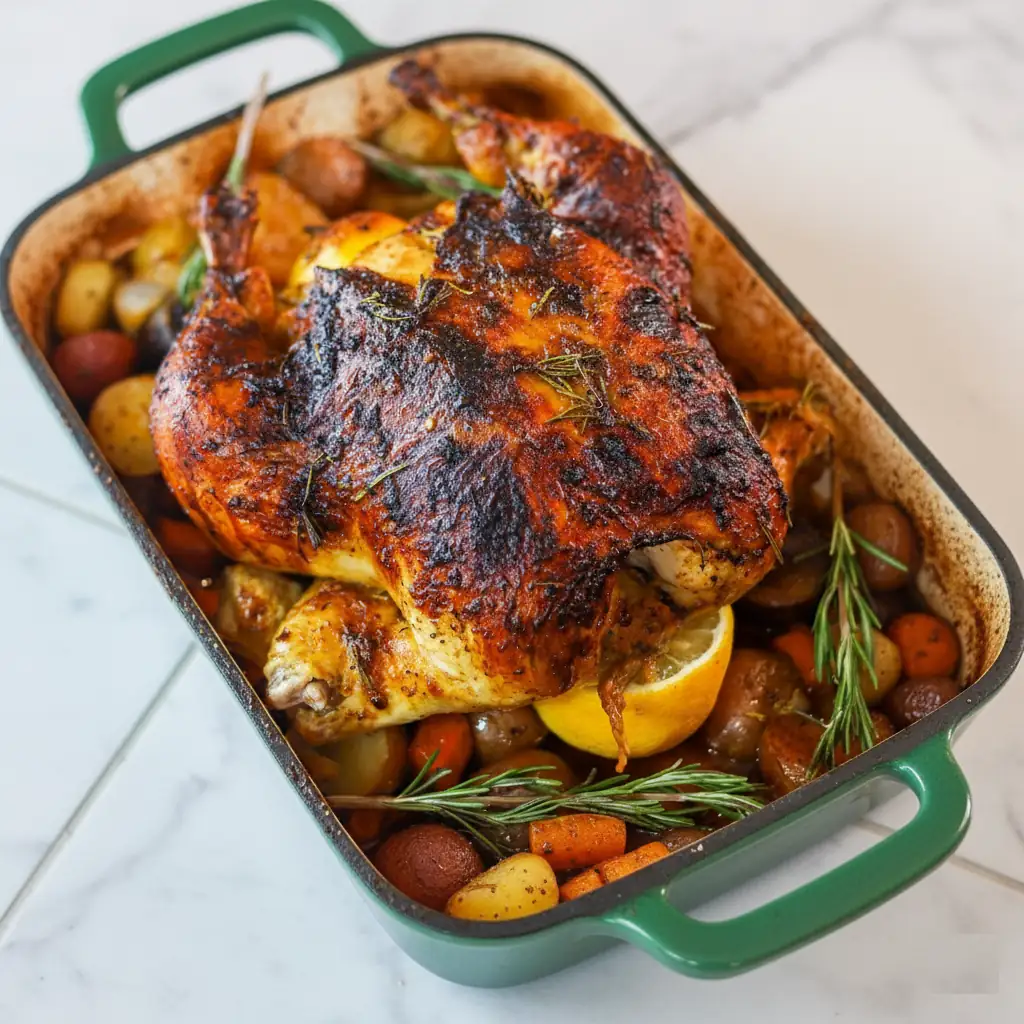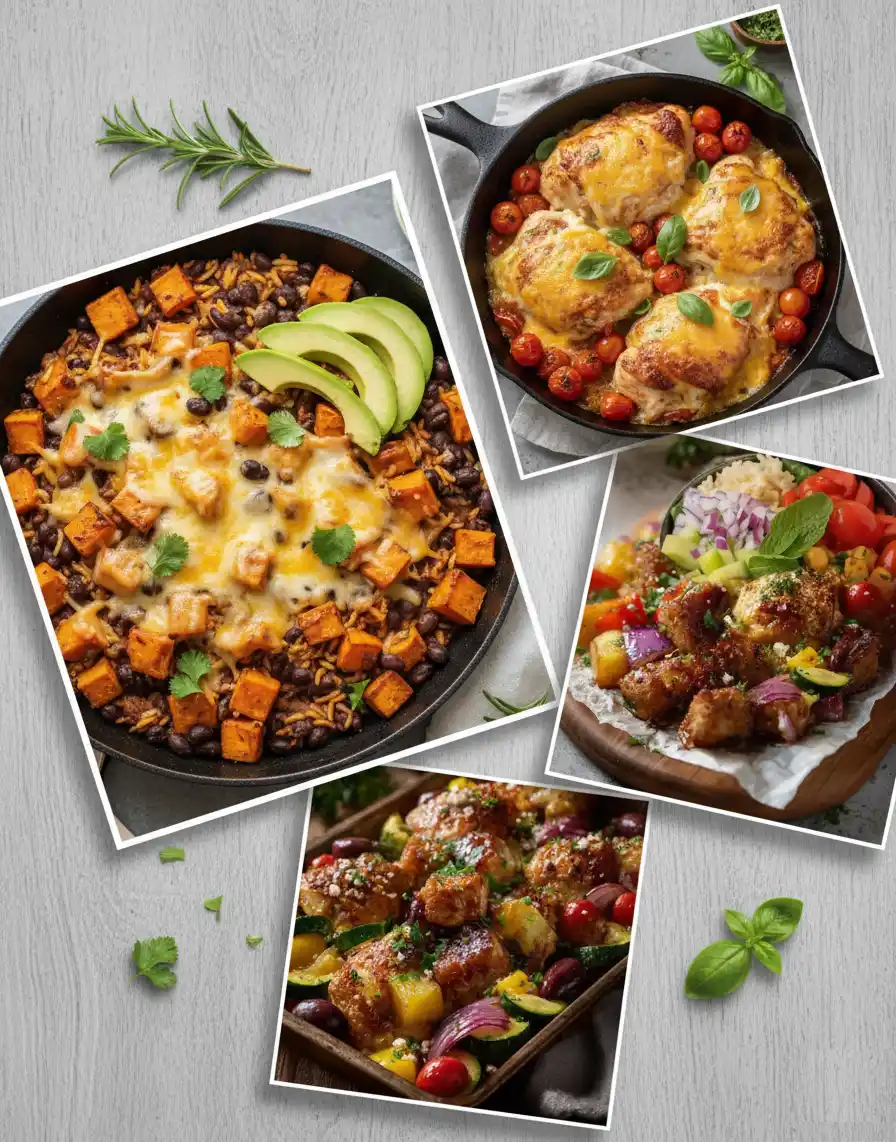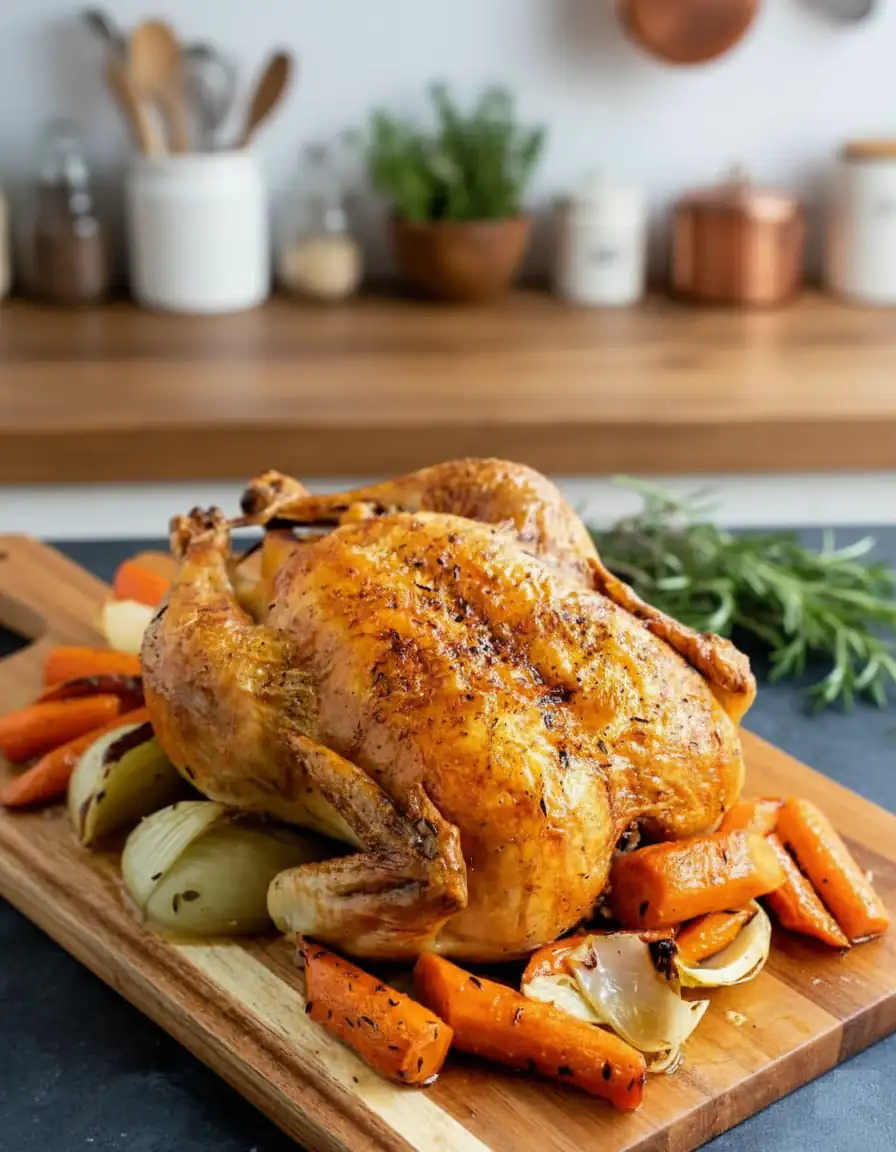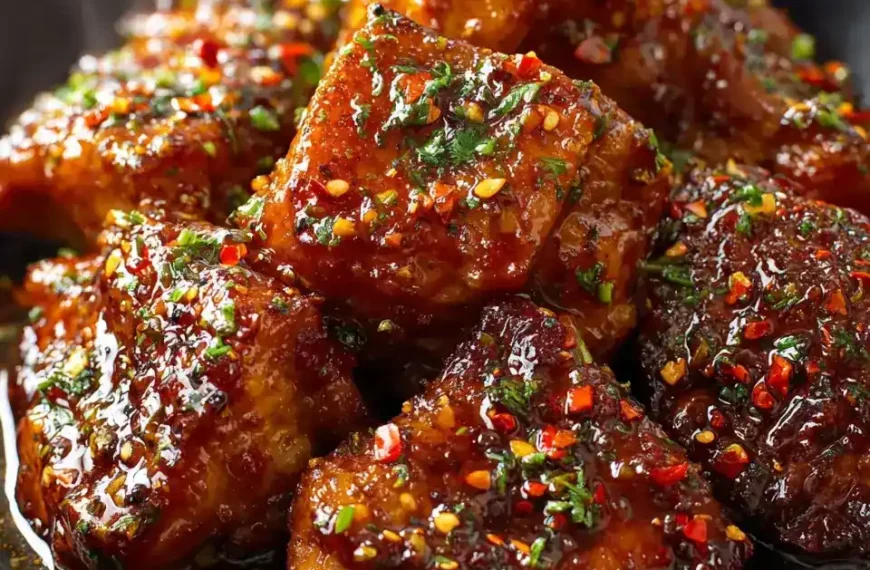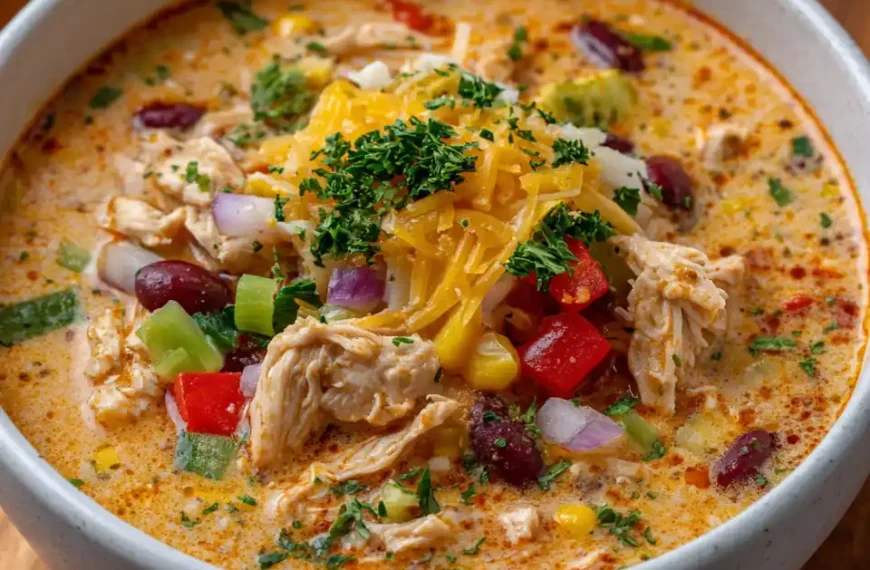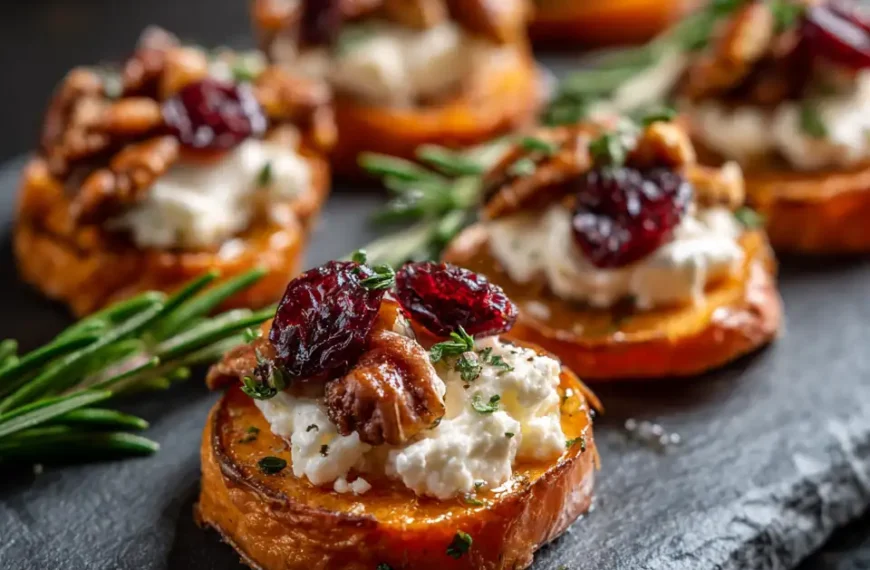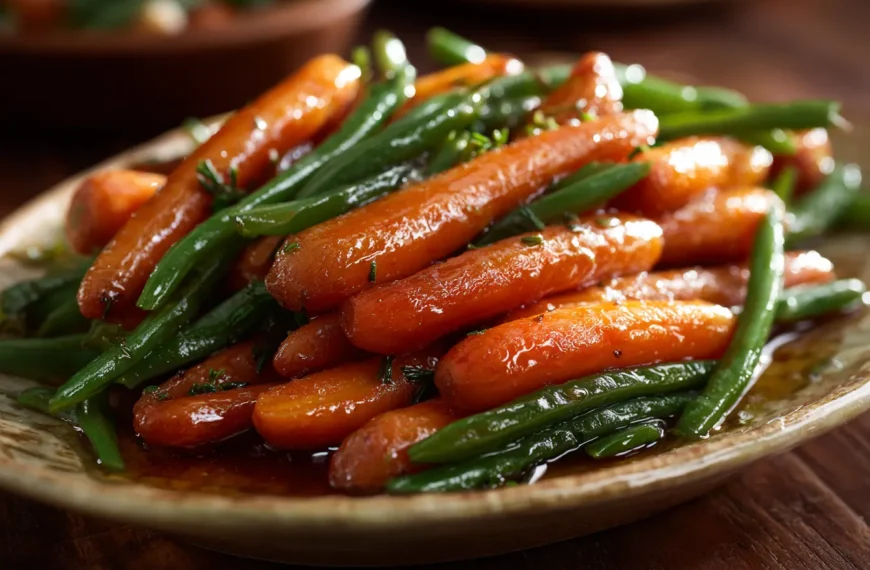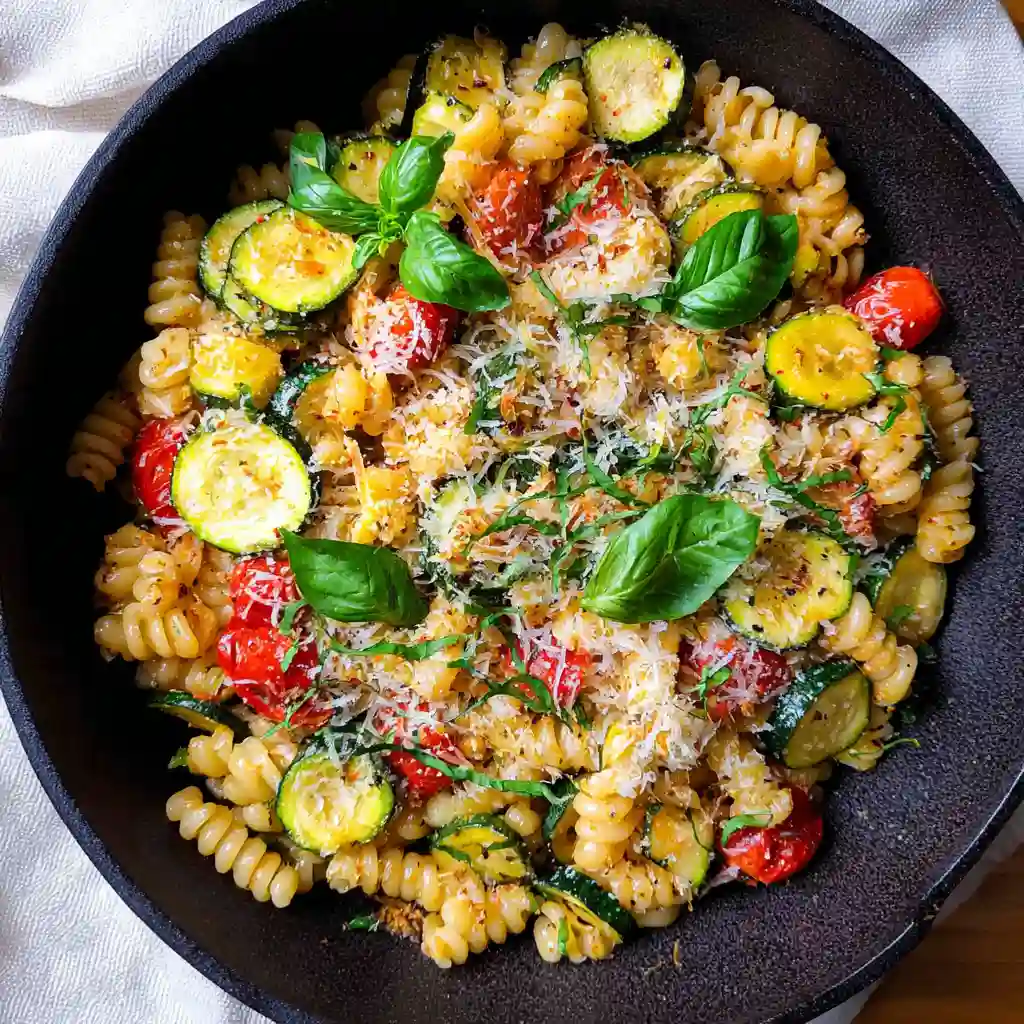Roasted chicken isn’t just a dish—it’s a moment. The kind that fills the kitchen with warmth and sends everyone wandering in asking, “Is it ready yet?” There’s something deeply satisfying about pulling a golden bird out of the oven, skin crackling, juices bubbling, herbs peeking out from under the crispy wing tips. This isn’t your plain salt-and-pepper roast either—it’s bold, buttery, and steeped in Southern flavor.
This recipe delivers on comfort and flavor. We’re talking juicy chicken rubbed with a garlic butter blend that goes under the skin for max flavor, seasoned vegetables that roast in savory drippings, and a pan sauce that practically makes itself. Whether it’s Sunday dinner or a weeknight you want to feel like a celebration, this roasted chicken with veggies has your back.
Let’s start at the heart of it—what makes this roast chicken one you’ll come back to again and again.
A Sunday Staple Roasted Chicken That Feels Like Home
Aromas that Bring Everyone to the Table
Nothing calls people to the table quite like the smell of roasted chicken. It’s nostalgic. It’s inviting. And when it’s done right—seasoned to the bone and resting on a bed of roasted vegetables—it’s unbeatable. That’s what this roasted chicken delivers. It begins with simple ingredients: a whole chicken, root vegetables, herbs, and butter, but when they come together in a hot oven, magic happens.
Roasting the chicken directly over the vegetables allows the fat and flavor from the bird to drip down, seasoning everything below. As it cooks, the skin turns golden, the butter melts into the meat, and the wine or stock in the pan helps keep everything juicy while forming the base of an irresistible pan sauce.
The Secret’s in the Butter and Under the Skin
This isn’t just butter. It’s garlic butter amped up with a Creole twist: smoked paprika, cayenne, onion powder, lemon zest, and fresh rosemary. And we’re not just brushing it on top. We’re taking the time to loosen the skin and rub that goodness underneath. Why? Because the skin protects the top, but the flavor needs to reach the meat itself.
Stuffing the cavity with lemon, onion, and herbs does more than infuse flavor—it also keeps the inside moist. That internal steam helps the chicken roast evenly from the inside out, while the seasoned butter on the outside ensures crispy, flavorful skin you’ll fight over.
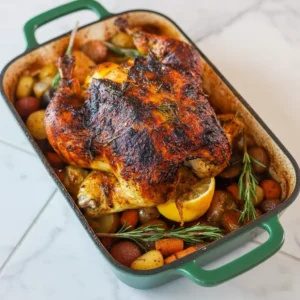
Roasted Chicken
Equipment
- Roasting pan with rack or baking dish
- Food processor or blender
- Small mixing bowls
- Basting brush
- Meat thermometer
Ingredients
- Roasted Chicken and Veggies
- 1 whole chicken 4-5 lbs
- 1 lb baby potatoes halved
- 1 lb carrots roughly chopped
- 1 large onion quarted
- 4 tbs olive oil
- 2 tbs salt divided
- 2 tsp black pepper
- 1 tbs bayou city all purpose seasoning
- 2 sprigs rosemary
- 4 sprigs thyme
- 2 sprigs sage
- 1/2 cup white wine or chicken stock
- Garlic Butter
- 1 1/2 stick butter softened
- 4 cloves garlic minced
- 1 tbs Bayou City All Purpose Seasoning or creole seasoning
- 1 tsp smoked paprika
- 1 tsp cayenne optional but necessary
- 1 tsp onion powder
- 1 lemon zest
- 1 tbs rosemary chopped
- salt and pepper to taste
Instructions
- Preheat your oven to 425°F (220°C).
- Season chicken with 1 tbs of salt and set aside. (This will help draw out excess moisture and create a crispy skin)
- Prep garlic butter In a small bowl. Combine the softened butter, minced garlic, all purpose (creole) seasoning, smoked paprika, cayenne pepper (if using), onion powder, chopped rosemary, and lemon zest. Mix until well combined add salt and pepper to taste
- Pat the chicken dry with paper towels. Rub the Creole garlic butter all over the chicken, including under the skin and inside the cavity. Stuff the chicken cavity with lemon, thyme, rosemary, sage, and half onion.
- In a large bowl, toss the baby potatoes, carrots, and remaining onion with olive oil, salt, pepper, bayou city seasonings, and dried thyme. Add the vegetables to a large roasting pan and pour in the white wine/chicken stock.
- Place the chicken breast-side up on a rack over the vegetables (you can also just place it on top of the veggies) in the roasting pan. Roast for 1 hour 30 minutes, or until the internal temperature reaches 165°F (75°C) and the skin is golden and crispy. Baste the chicken with pan drippings around every 30 minutes.
- Once the chicken is fully cooked, remove it from the oven and let it rest for 10-15 minutes before carving.
- Serve the roasted chicken alongside the vegetables, with the pan drippings on the side for dipping. Enjoy!
Notes
Substitutions: If you don’t have my All Purpose Seasoning, you can substitute with Cajun/Creole seasoning or a mix of paprika, garlic powder, onion powder, and cayenne.
Resting the Chicken: Letting the chicken rest ensures that the juices redistribute, keeping the meat moist and flavorful.
Pat the Chicken Dry: Ensure the chicken is completely dry before applying the Creole garlic butter. This helps the skin crisp up and become golden during roasting.
Season Under the Skin: Gently lift the skin from the chicken breast and thighs and rub the Creole garlic butter directly onto the meat. This infuses more flavor into the chicken and keeps the meat moist.
Building Flavor from the Ground Up
Creole Garlic Butter: The Flavor Bomb
Roasted chicken can be good with just salt and pepper—but this chicken goes further. It gets its bold, savory flavor from a homemade Creole garlic butter that’s mixed, spread, and tucked under the skin. You’ll need softened butter (not melted), freshly minced garlic, a solid all-purpose seasoning blend, and some spice to wake everything up.
The combination of smoked paprika, onion powder, cayenne, and lemon zest gives the butter warmth and depth. The chopped rosemary adds a fragrant earthiness that pairs beautifully with roasted poultry. The butter is more than a coating—it’s a marinade, a crisping agent, and the flavor foundation for the entire dish.
Here’s a tip: use a food processor or blender to whip it together for an ultra-smooth texture that glides easily under the skin. Be generous with it. Don’t just rub the surface—slide that seasoned butter beneath the breast and thigh skin. That’s where it truly shines. The result? Chicken that’s juicy, seasoned throughout, and packed with character.
Perfect Pairings: Potatoes, Carrots & Pan Sauce
No roast chicken is complete without something hearty to go alongside—and this recipe delivers in the form of baby potatoes, carrots, and onions roasted right in the pan. They soak up all the juices that drip from the chicken as it cooks, turning them into golden, flavor-packed bites. The vegetables are tossed with olive oil, salt, pepper, and the same all-purpose seasoning used in the garlic butter. That brings consistency to every bite without feeling repetitive.
To help the veggies roast instead of steam, the oven starts hot at 425°F. A splash of white wine or chicken stock added to the pan creates moisture that slowly evaporates, enhancing the roasted flavor without drying anything out. This also helps form the base of a pan sauce. Once the chicken is done, just tilt the pan, scoop up the juices, and drizzle that savory gold right over your plate. It’s simple—but it tastes like you worked all day.
Oven Timing & Temperature Tactics
Why 425°F Matters for Skin & Moisture
When it comes to roasted chicken, the oven temp isn’t just a suggestion—it’s a strategy. Roasting at 425°F gives you that golden, crisp skin without drying out the meat. It’s hot enough to render the fat under the skin and create that irresistible crackle, but balanced enough to cook the chicken evenly from the inside out.
Lower temps might keep the chicken moist, but you’ll lose the texture on the outside. Higher temps? Risky. You might burn the skin before the inside cooks through. At 425°F, especially with the bird resting on a bed of vegetables (or a rack over them), you get the best of both: crispy on the outside, juicy on the inside.
Here’s what to watch for:
- Internal temp of the thickest part of the thigh should read 165°F on a meat thermometer.
- Golden skin and lightly charred edges on the veggies means it’s almost done.
- Baste every 30 minutes with pan drippings to keep the top glossy and flavorful.
Roast time usually lands around 1 hour and 30 minutes for a 4–5 lb chicken, but always check with a thermometer. Trust the temp—not the clock.
The Resting Period That Seals the Deal
It’s tempting to carve as soon as the chicken hits the counter—don’t. That 10 to 15 minutes of resting time is crucial. Right out of the oven, the juices inside are bubbling and moving. If you cut into it immediately, they’ll all run out, leaving you with dry slices and a messy board.
Instead, tent the bird loosely with foil and walk away. Letting it rest allows those juices to redistribute through the meat. When you do slice, you’ll get tender, moist cuts with flavor locked in—not dripping out. And while you wait, it’s the perfect time to finish plating those roasted veggies and stir the pan drippings into a rich sauce.
Troubleshooting & Customization Tips
No Bayou City Seasoning? Here’s What to Use
If you don’t have Bayou City All Purpose Seasoning, don’t worry—this recipe is still 100% doable with pantry staples. The goal is to build a similar flavor profile: savory, slightly smoky, a little heat, and lots of depth.
Here’s a quick DIY substitute:
| DIY Creole Blend | Measurement |
|---|---|
| Smoked Paprika | 1 tbsp |
| Garlic Powder | 1 tsp |
| Onion Powder | 1 tsp |
| Cayenne Pepper | ½ tsp |
| Dried Thyme or Oregano | ½ tsp |
Mix and match according to your taste—don’t be afraid to adjust the heat level or toss in a pinch of lemon pepper or ground mustard if you’re feeling bold.
Make It Yours: Spice It Up or Tone It Down
This roasted chicken is flavorful by default, but you can easily tweak it to suit your spice preference or dietary needs.
Want it hotter?
Double the cayenne, or throw in a few crushed red pepper flakes. You can even add finely diced jalapeños to the cavity before roasting for a spicy, aromatic steam effect. A smoky hot sauce glaze near the end of roasting also adds heat without overpowering the herb notes.
Need it milder?
Leave out the cayenne entirely and use sweet paprika instead of smoked. This gives color and a touch of sweetness without the punch.
Other customization tips:
- Use chicken thighs or spatchcock the bird for faster cook time and more even browning.
- Add Brussels sprouts or parsnips to the veggie mix for fall flavor.
- Swap white wine with apple cider vinegar + broth for a tangy twist if wine isn’t your thing.
Roasted chicken doesn’t have to be complicated—it just needs the right foundation and a few personal touches to make it feel like your own.
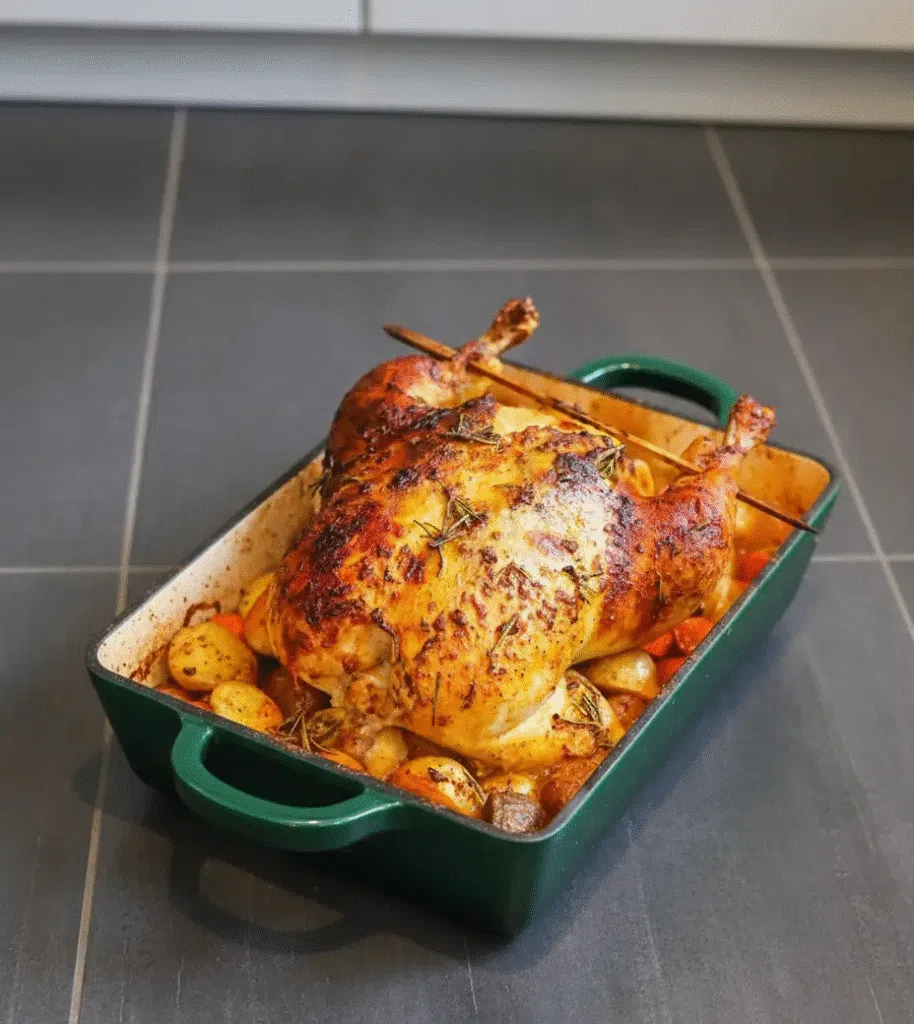
Frequently Asked Questions About Roasted Chicken
How do you keep a whole roasted chicken moist?
Moisture starts with prep. First, pat the chicken completely dry, then salt it in advance—this draws out moisture and helps retain juiciness during roasting. Rubbing seasoned butter under the skin and stuffing the cavity with fresh herbs and aromatics traps steam inside. Finally, resting the chicken for 10–15 minutes after roasting ensures the juices stay in the meat where they belong.
Should you cover roasted chicken with foil while cooking?
Not usually. Roasting uncovered at high heat allows the skin to crisp and brown properly. If you notice the top getting too dark before the internal temperature hits 165°F, you can tent loosely with foil for the last 15–20 minutes. But generally, leave it open and let the buttered skin do its job.
What’s the best temperature for roasting a whole chicken?
For crispy skin and juicy meat, 425°F (220°C) is ideal. It’s high enough to brown the skin while cooking the chicken thoroughly. Always use a meat thermometer to confirm doneness—165°F in the thickest part of the thigh is the goal.
Can I prepare roasted chicken in advance?
Yes. You can season and butter the chicken up to 24 hours ahead, then cover and refrigerate it. Let it sit at room temperature for about 30 minutes before roasting. The garlic butter also keeps well—make it in advance and refrigerate until needed.
Conclusion
Roasted chicken is more than just dinner—it’s comfort, flavor, and tradition all wrapped into one crispy-skinned, juicy-centered package. With a deeply seasoned Creole garlic butter, a bed of tender vegetables, and pan drippings that double as sauce, this recipe doesn’t just feed—it satisfies. Whether you’re making it for Sunday supper or just need a reliable classic that impresses every time, this roasted chicken is the kind of meal that makes you feel like home.
